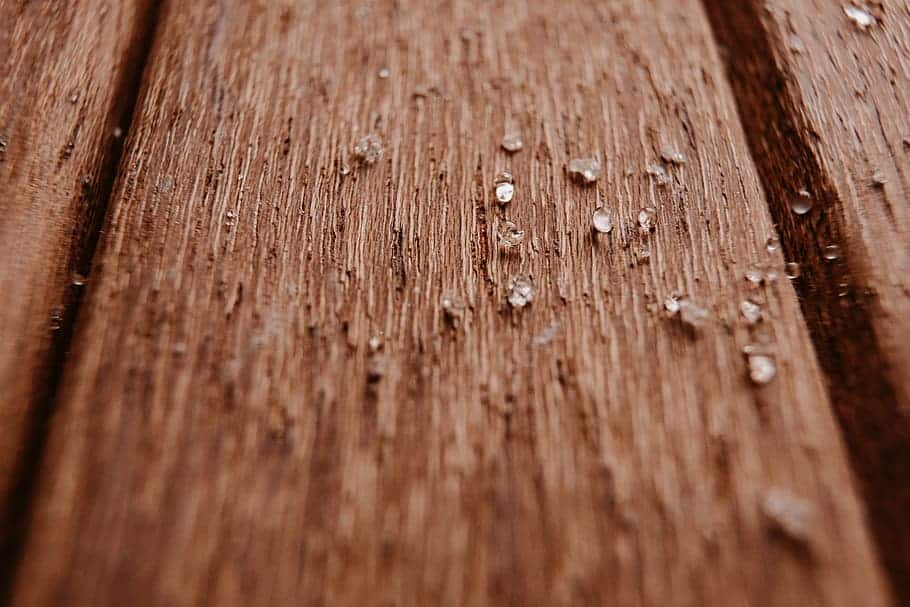Jump to:
When summer rolls around, you’ll want to keep an eye on your wooden shed. While timber is robust, it can take a bit of a beating in high temperatures. It helps to know how heat can affect your storage building to ensure it holds up during the hot weather.
Here’s a look at what happens when exposed, the risks to watch out for, and some ways to keep your investment in top shape.
The Natural Characteristics of Wood

Wood is a fantastic building material for garden buildings. Its strength-to-weight ratio is greater than most steel, which is why it’s such a popular choice for sheds. One of its best features is its insulating properties—it helps keep the inside cooler when it’s hot and warmer when the temperature drops.
That said, wood also has a habit of expanding and contracting with temperature changes. In humid conditions, it soaks up moisture and expands. In drier, hotter weather, it loses moisture and shrinks. This is just how timber adapts to its surroundings.
And here’s the thing: these changes can lead to problems like warping, cracking, or splitting if you don’t keep on top of things. But if you understand how wood reacts, you can take steps to keep it in good shape.
How Does Heat Affect Your Wooden Shed?
High temperatures can cause the wood to warp, crack, and split, which weakens its structure and ruins its look. Prolonged exposure to heat can also lead to even more problems down the line.
Warping is where wood bends or twists because it expands and contracts with the heat. This can make your shed’s doors and windows no longer fit and create gaps between the panels, letting in moisture and pests.
As the wood dries out, it loses its moisture, which causes cracks to form. These weaken the timber, let moisture in, and can even cause shrinkage. Not to mention the constant expansion and contraction can also result in splitting!
You might have to deal with repairs to maintain its stability and serve its purpose. Here are a few things you can do to prevent these issues (more on this later):
- Ventilate your shed
- Keep up with regular shed maintenance
- Apply protective coatings whenever needed
These simple steps can reduce the chances of warping, cracking, or splitting, and they’ll also help your shed last longer and look better, even in the heat.
Maintenance and Prevention
Looking after your wooden shed regularly or as needed is one of the best ways to stop it from drying out in the heat. A bit of effort here and there, such as:
Sealing it up
Give your wooden garden storage a good layer of wood sealant to shield it from heat, UV rays, and moisture, which will prevent it from drying it out too much. Focus on the roof, walls, doors and windows when sealing. Reapply it when needed.
Want to know more? Take a look at this guide: Shed Maintenance: Treatments and Refurbishing
Keep it ventilated
Proper shed ventilation means good air circulation and less chance of condensation. You can do this by simply opening the windows to let air flow through. Many wooden sheds also feature wall vents; if yours does, keeping the inside ventilated is even easier.
Install heat-reflective roofing
Heat-reflective roofings works like magic! It’s designed to bounce sunlight away instead of absorbing it. For your wooden shed, this means less heat building up inside and less stress on the timber.
Note: This method may be more costly upfront than regular roofing, but it’s a good investment in the long run. The heat protection it provides means fewer repairs down the line.
Round-up
Wood naturally absorbs and releases moisture depending on the environment, but excessive heat speeds up the drying process. When it gets parched, it can cause real problems for your shed.
Shrinkage can create gaps between the wooden parts, letting in moisture and pests. On top of that, losing moisture weakens the wood, making it more likely to warp, crack, or split, which can affect the shed’s durability and lifespan.
Take the time to seal your shed, from the roof to the walls, doors, and windows. Open the windows for a few hours each day to keep the air circulating inside. And if you have the budget, consider installing a heat-reflective coating to prevent your shed from getting too hot.
Up next on your reading list: How to Keep your Garden Shed Cool in the Summer







